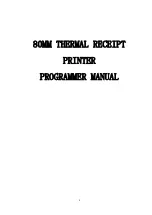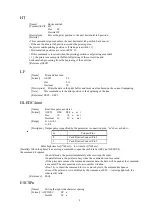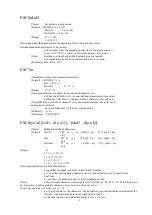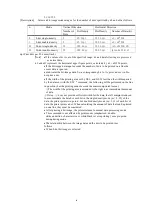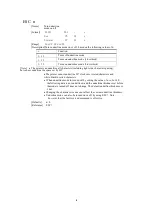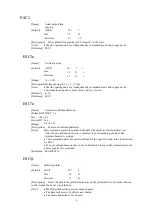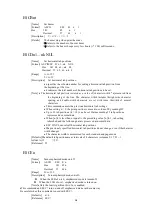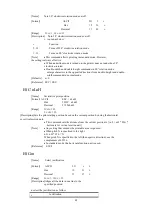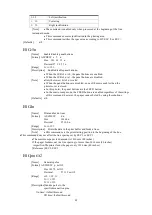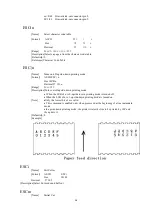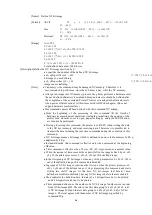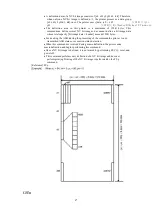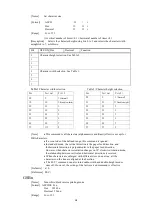
3
ESC$nLnH
[Name]
Set absolute print position
[Format] ASCIIESC $ nL nH
Hex1B
24 nL nH
Decimal27 36 nL nH
[Range]
0
≤
nL
≤
255
0
≤
nH
≤
255
[Description]Sets the distance from the beginning of the line to the position at
whichsubsequent characters are to be printed.
•
The distance from the beginning of the line to the print position is
[( nL + nH * 256) *(vertical or horizontal motion unit)] inches.
[Note]
•
Settings outside the specified printable area are ignored.
•
In standard mode, the horizontal motion unit ( x) is used.
[Reference] ESC\, GS $, GS \
ESC%n
[Name]Select/cancel user-defined character set
[Format] ASCIIESC % n
Hex 1B 25 n
Decimal
27 37 n
[Range]
0
≤
n
≤
255
[Description]Selects or cancels the user-defined character set.
•
When the LSB of n is 0, the user-defined character set is canceled.
•
When the LSB of n is 1, the user-defined character set is selected.
[Note]When the user-defined character set is canceled,the internal character set is
automatically selected
•
n is available only for the least significant bit
.
[Defaults]
n=0
[Reference]
ESC&,ESC?
ESC&yc1c2[x1d1...d(y
×
x1)].. .[xkd1...d(y
×
xk)]
[Name]
Define user-defined characters
[Format]
ASCII
ESC &
y c1 c2[x1d1...d(y
x1)]...[xkd1...d(y
xk)]
Hex
1B 26 yc1
c2[x1d1...d(y
x1)]...[xkd1...d(y
xk)]
Decimal
27 38 yc1
c2[x1d1...d(y
x1)]...[xkd1...d(y
xk)]
[Range]
y=3
32
≤
c1
≤
c2
≤
126
0
≤
x
≤
12(12
×
24)
0
≤
x
≤
9(9
×
17)
0
≤
d1...d(y
×
xk)
≤
255
[Description]Defines user-definedcharacters.
•
y specifies the number of bytes in the vertical direction.
•
c1 specifies the beginning character code for the definition, and c2 specifies the
final code
•
x specifies the number of dots in the horizontal direction.
[Note]
•
The allowable character code range is from ASCII code <20>H to <7E>H (95characters).
•
It is possible to define multiple characters for consecutive character codes.
If only one character is desired, use c1 = c2.
•
d is the dot data for the characters. The dot pattern is in the horizontal directionfrom the
left side. Any remaining dots on the right side are blank.
•
The data to define a user-defined character is
(y
×
x)
bytes.

